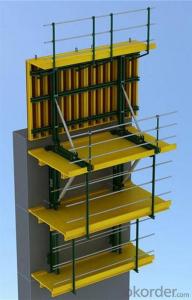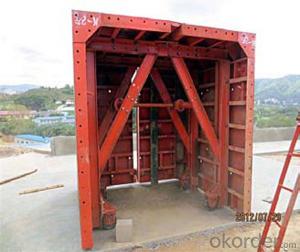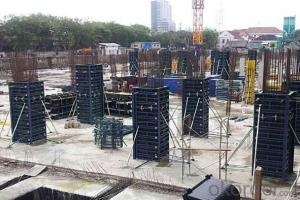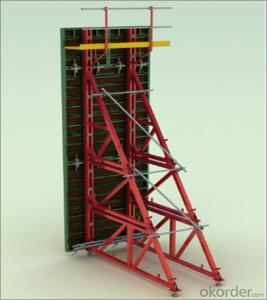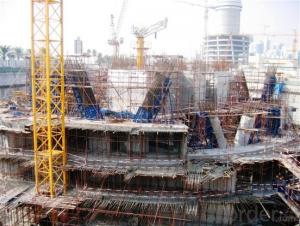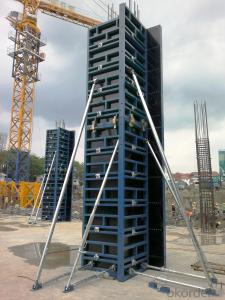Plastic Scaffold System Formwork System Formwork low price
- Loading Port:
- Tianjin
- Payment Terms:
- TT OR LC
- Min Order Qty:
- 30 m.t
- Supply Capability:
- 1000 m.t/month
OKorder Service Pledge
OKorder Financial Service
You Might Also Like
Plastic Scaffold System Formwork System Formwork low price
Product pictures:
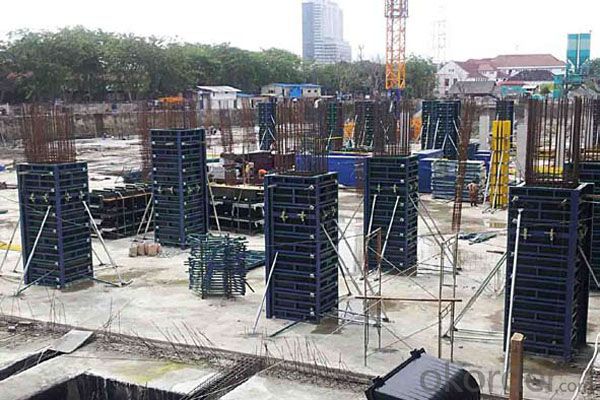
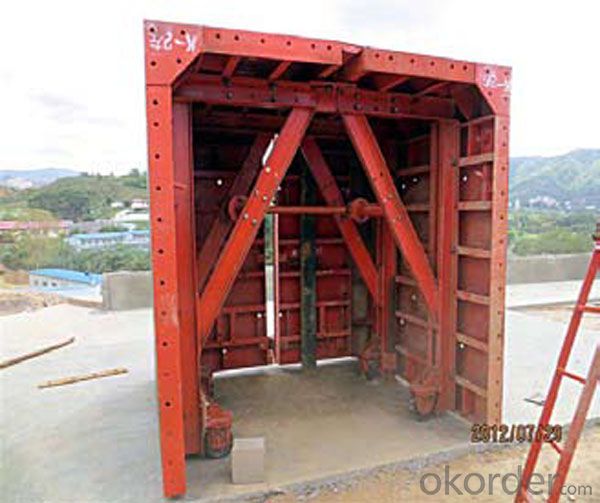
Product description:
Name: | RingLock Scaffold System |
Category: | Scaffolding System |
Material: | Steel (Q235/Q345) |
Size: | D48*3.25mm, etc |
Surface: | Electro Galvanized, Hot Dipped Galvanized, Painted, Powder Coated |
Component: | Standard, Ledger, Diagonal Brace, Bracket, Base Jack, U Head Jack, Etc. |
Application: | Slab Support, Staircase, Stage Plateforms, Bridge Support, Mobile Tower, etc. |
Manufacturer: | OEM is Available |
Items or goods can be manufactured according to your standards. | |
Advantage
* Good loading capacity
* Easy to assemble and dismantle
* Excellent quality for formwork & scaffolding with wide choices
Other scaffolding & formwork products:
(1) Scaffolding System:
(2) Scaffolding Frame & Accessories:
(3) Scaffolding Couplers/Clamps:
(4) Formwork System Scaffolding & Accessories:
Company introduce and advantages:
1. One of Fortune 500 companies in the world. No. 5 in the building material fi eld.
2. Six Sigma strategy , which means no more than 3.4 defects existing among one million of error
possibilities.
3. In line with the business, we launched E-business platform Okorder.com.
4. We are highly recognized by our business partners and clients all over the world and has obtained rapid
development under the spirit of win-win.
FAQ
Why Us?
We are one of the largest construction materials suppliers in China.
We own professional manufacturers with powerful producing capacity.
Extensive and comprehensive quality control system
Excellent products with competitive prices.
Efficient services in pre and after sale.
Full energy with affluent experience team.
- Q:How does steel frame formwork accommodate for different concrete mix proportions?
- Steel frame formwork can accommodate for different concrete mix proportions by providing adjustable panels and supports. These panels can be easily repositioned or modified to accommodate varying concrete mix proportions and ensure proper alignment and stability during the pouring and curing process. Additionally, the steel frame formwork system allows for precise control over the placement and compaction of the concrete, ensuring uniformity and strength regardless of the mix proportions used.
- Q:Do steel frame formwork systems require any additional support or reinforcement?
- Yes, steel frame formwork systems often require additional support or reinforcement depending on the specific construction project. While steel frame formwork systems are generally strong and sturdy, they may need additional support to handle larger concrete loads or to ensure stability during the construction process. Additional support or reinforcement can be provided through various means. For example, diagonal bracing can be used to strengthen the steel frame and prevent any potential deformation or collapse. Similarly, steel props or shoring systems may be required to provide additional support to the formwork, especially in cases where the concrete loads are high or the formwork spans large distances. In some instances, engineers may also recommend using tie rods, walers, or other structural elements to reinforce the steel frame formwork system. These elements can help distribute the loads evenly and provide the necessary stability to the formwork during concrete pouring and curing. Ultimately, the need for additional support or reinforcement will depend on the specific project requirements, including the size and complexity of the structure, the concrete loads involved, and the safety standards to be adhered to. It is crucial to consult with a qualified structural engineer or construction professional to determine the appropriate level of support or reinforcement needed for a steel frame formwork system.
- Q:Can steel frame formwork be used for curved or irregularly shaped concrete structures?
- Curved or irregular concrete structures can indeed utilize steel frame formwork. The malleability of steel permits easy manipulation and shaping to accommodate diverse curves and irregularities in the concrete structure. The steel frame formwork provides essential support and stability during the pouring and curing stages, guaranteeing the desired concrete shape. It can be adjusted and tailored according to project-specific requirements, rendering it a versatile option for forming curved or irregular structures. Furthermore, steel frame formwork offers robustness and resilience, ensuring its ability to withstand the pressures and forces exerted throughout the concrete placement and curing process. In summary, steel frame formwork proves to be a suitable choice for achieving intricate and distinctive shapes in concrete construction projects.
- Q:How does steel frame formwork affect the overall cost of a construction project?
- Steel frame formwork can have a significant impact on the overall cost of a construction project. While it may have a higher upfront cost compared to traditional wood formwork, it offers several benefits that can result in cost savings in the long run. Firstly, steel frame formwork is highly durable and reusable. Unlike wood formwork, which needs to be replaced after a few uses, steel formwork can be used multiple times, reducing the need for new materials and lowering the overall construction costs. This reusability also reduces waste and minimizes the environmental impact of the project. Secondly, steel formwork allows for faster construction. Its modular design and ease of assembly enable quicker installation and dismantling, reducing labor costs and speeding up the overall construction process. This increased efficiency can result in significant time savings, especially in large-scale projects, leading to cost savings. Moreover, steel formwork provides better quality control and precision in concrete placement. Its rigid structure ensures that the concrete is poured accurately, eliminating the need for rework and reducing material wastage. This improved quality control can prevent costly errors and delays, ultimately saving money. Additionally, steel formwork offers versatility in design and customization. It can be easily adjusted and modified to meet specific project requirements, allowing for greater flexibility and minimizing the need for specialized formwork systems. This adaptability reduces the need for additional formwork materials and simplifies the construction process, leading to cost savings. Lastly, steel formwork requires minimal maintenance compared to wood formwork, which can be susceptible to rot, warping, and other damages. The reduced maintenance and repair costs associated with steel formwork contribute to overall cost savings over the project's lifespan. In conclusion, while steel frame formwork may have a higher initial cost, its durability, reusability, speed of construction, improved quality control, versatility, and minimal maintenance requirements can result in significant cost savings throughout the construction project.
- Q:Can steel frame formwork be used in high-rise construction projects?
- Yes, steel frame formwork can be used in high-rise construction projects. Steel frame formwork is a versatile and robust system that offers several advantages for high-rise construction. Firstly, steel frame formwork provides excellent strength and durability, making it suitable for withstanding the high loads and pressures experienced in tall buildings. The steel frames are designed to support the weight of the concrete and other materials, ensuring that the formwork remains stable and secure during the construction process. Additionally, steel frame formwork allows for faster construction compared to traditional timber formwork. The prefabricated steel frames can be easily assembled and disassembled, allowing for quick and efficient construction cycles. This is especially crucial in high-rise construction, where time is a critical factor. Moreover, steel frame formwork offers flexibility in design and can be customized to meet specific project requirements. The steel frames can be fabricated in various sizes and shapes, allowing for the construction of complex and unique structures. This adaptability is essential in high-rise construction, where architects and engineers often have to deal with intricate designs and challenging construction conditions. Furthermore, steel frame formwork provides a smooth and high-quality finish to the concrete surfaces. The steel frames are designed to minimize surface defects and ensure uniformity, resulting in a visually appealing and structurally sound final product. Overall, the use of steel frame formwork in high-rise construction projects offers numerous advantages, including strength, durability, speed, flexibility, and high-quality finishes. These benefits make it a suitable choice for constructing tall buildings efficiently and effectively.
- Q:Can steel frame formwork be used in high-rise construction?
- Indeed, high-rise construction can make use of steel frame formwork. This option proves to be versatile and sturdy when it comes to erecting tall buildings. It possesses the necessary strength and stability to withstand the weight and pressure exerted by the concrete during the construction phase. Assembling and disassembling steel frame formwork is a straightforward task, which makes it suitable for repetitive use in high-rise projects. Furthermore, its adjustable features allow for accommodating various shapes and sizes of concrete structures. Employing steel frame formwork in high-rise construction guarantees efficiency and safety, resulting in accelerated project completion and improved structural integrity.
- Q:How does steel frame formwork handle concrete pouring at different heights?
- The effectiveness of steel frame formwork lies in its adjustable nature and strong structural design, making it a versatile and reliable system for concrete pouring at different heights. To begin, the adjustability of steel frame formwork allows for easy adaptation to varying heights. By extending or shortening the frames, the formwork can securely and firmly fit against the concrete structure. This feature is particularly valuable when pouring concrete at different heights, as it ensures smooth transitions and a consistent finish. In addition, steel frame formwork is designed with durability and strength in mind. Its robust steel construction can withstand the weight and pressure of the poured concrete. This provides excellent support and stability, preventing deformation or collapse under the concrete's weight. The safety and integrity of the structure are guaranteed, especially when pouring concrete at different heights. Furthermore, steel frame formwork offers versatility and customization to accommodate different architectural designs and requirements. It can be used for both horizontal and vertical concrete placements, making it suitable for various construction projects. Whether pouring concrete at ground level or elevated heights, the adaptable steel frame formwork system can meet the specific needs of each situation. In conclusion, steel frame formwork is a dependable and flexible system that handles concrete pouring at different heights effortlessly. Its adjustable nature and strong structural design ensure secure support and stability throughout the pouring process. These qualities make steel frame formwork the ideal choice for construction projects requiring concrete placement at varying heights.
- Q:How does steel frame formwork handle concrete pouring in rainy weather conditions?
- Even in rainy weather conditions, steel frame formwork proves to be a highly dependable and strong construction system that effectively handles concrete pouring. The design of the steel frame provides the necessary support and stability to the formwork, enabling it to withstand the pressure and weight of wet concrete. To shield the concrete from direct contact with water during rainy weather, a waterproof membrane or tarp is typically used to cover the steel frame formwork. This precautionary measure prevents the concrete from becoming diluted or washed away by rain, which could compromise the structure's quality and strength. Furthermore, the tight joints and connections of the steel frame formwork minimize the risk of water seeping into the formwork. This ensures that the concrete maintains its integrity and shape during the pouring process. The rigid structure of the steel frame also prevents any deformation or movement of the formwork, guaranteeing accurate and even pouring of the concrete. In addition, the steel frame formwork system is designed with proper drainage channels and outlets to divert excess water away from the concrete. This prevents water accumulation and ensures that the concrete sets properly without any water-related issues such as voids or weak spots. In conclusion, steel frame formwork is a reliable choice for concrete pouring in rainy weather conditions. Its strong construction, waterproofing measures, and efficient drainage system work together to maintain the quality and integrity of the concrete, resulting in a successful and durable construction project.
- Q:What are the different types of reinforcement systems used with steel frame formwork?
- There are several different types of reinforcement systems used with steel frame formwork in construction projects. These reinforcement systems are designed to provide additional strength and stability to the formwork, ensuring that it can withstand the weight and pressure of the concrete being poured. One common type of reinforcement system used with steel frame formwork is the use of steel bars or rods. These bars are typically placed horizontally and vertically within the formwork to create a grid-like pattern. This grid of steel bars helps to distribute the weight and pressure of the concrete evenly, preventing the formwork from collapsing or deforming. Another type of reinforcement system used with steel frame formwork is the use of steel mesh or wire. This mesh or wire is typically placed within the formwork to provide additional reinforcement and prevent the concrete from cracking or breaking under pressure. The mesh or wire is usually secured in place using ties or clips, ensuring that it remains in position during the pouring and curing process. In addition to steel bars and mesh, other reinforcement systems used with steel frame formwork include the use of fiber-reinforced polymers (FRPs) and plastic or composite materials. These materials are lightweight, yet strong, and can provide excellent reinforcement to the formwork. FRPs are often used in situations where corrosion resistance is required, as they are not susceptible to rust or degradation. Overall, the choice of reinforcement system used with steel frame formwork will depend on factors such as the specific project requirements, the type and load of the concrete being poured, and the desired level of strength and stability needed. It is important to consult with a structural engineer or construction professional to determine the most suitable reinforcement system for a particular project.
- Q:Can steel frame formwork be used for both rectangular and irregularly shaped concrete elements?
- Both rectangular and irregularly shaped concrete elements can be constructed using steel frame formwork. This versatile and flexible system can be easily adjusted and customized to accommodate different shapes and sizes. It is composed of steel frames, panels, and accessories that can be assembled in various configurations to create the desired formwork shape. The strength and stability of the steel frames allow the formwork to withstand the pressure exerted by the wet concrete during pouring and curing. Furthermore, the panels can be easily adjusted or cut to fit irregular shapes, making it suitable for constructing elements with non-standard geometries. In summary, steel frame formwork is an reliable and effective solution for constructing both rectangular and irregularly shaped concrete elements.
1. Manufacturer Overview |
|
|---|---|
| Location | |
| Year Established | |
| Annual Output Value | |
| Main Markets | |
| Company Certifications | |
2. Manufacturer Certificates |
|
|---|---|
| a) Certification Name | |
| Range | |
| Reference | |
| Validity Period | |
3. Manufacturer Capability |
|
|---|---|
| a)Trade Capacity | |
| Nearest Port | |
| Export Percentage | |
| No.of Employees in Trade Department | |
| Language Spoken: | |
| b)Factory Information | |
| Factory Size: | |
| No. of Production Lines | |
| Contract Manufacturing | |
| Product Price Range | |
Send your message to us
Plastic Scaffold System Formwork System Formwork low price
- Loading Port:
- Tianjin
- Payment Terms:
- TT OR LC
- Min Order Qty:
- 30 m.t
- Supply Capability:
- 1000 m.t/month
OKorder Service Pledge
OKorder Financial Service
Similar products
New products
Hot products
Hot Searches
Related keywords
